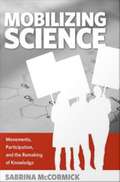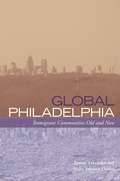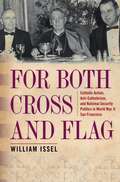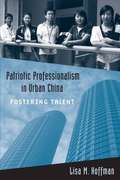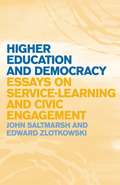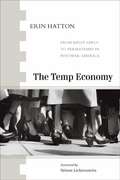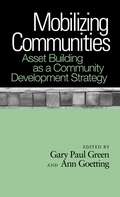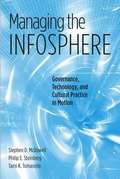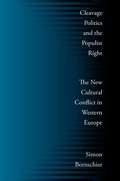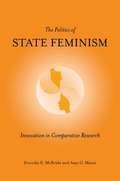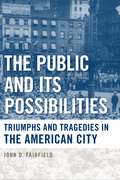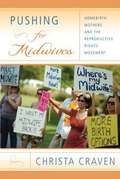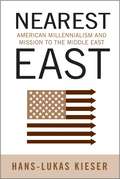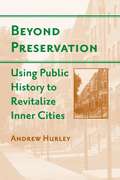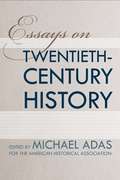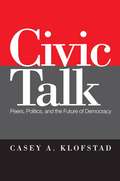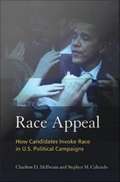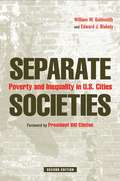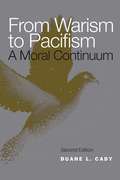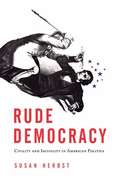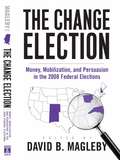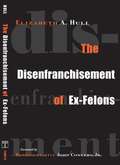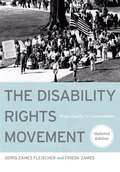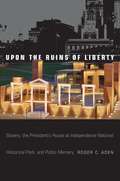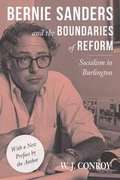- Table View
- List View
Mobilizing Science: Movements, Participation, and the Remaking of Knowledge
by Sabrina MccormickMobilizing Science theoretically and empirically explores the rise of a new kind of social movement--one that attempts to empower citizens through the use of expert scientific research. Sabrina McCormick advances theories of social movements, development, and science and technology studies by examining how these fields intersect in cases around the globe. McCormick grounds her argument in two very different case studies: the anti-dam movement in Brazil and the environmental breast cancer prevention movement in the U. S. These, and many other cases, show that the scientization of society, where expert knowledge is inculcated in multiple institutions and lay people are marginalized, gives rise to these new types of movements. While activists who consequently engage in science often instigate new methods that result in new findings and scientific tools, these movements still often fail due to superficial participatory institutions and tightly knit corporate/government relationships.
Global Philadelphia: Immigrant Communities Old and New
by Mary Johnson Takenaka Ayumi OsirimThe racial and ethnic composition of Philadelphia continues to diversify as a new wave of immigrants—largely from Asia and Latin America—reshape the city’s demographic landscape. Moreover, in a globalized economy, immigration is the key to a city’s survival and competitiveness. The contributors to Global Philadelphiaexamine how Philadelphia has affected its immigrants’ lives, and how these immigrants, in turn, have shaped Philadelphia. Providing a detailed historical, ethnographic, and sociological look at Philadelphia’s immigrant communities, this volume examines the social and economic dynamics of various ethnic populations. Significantly, the contributors make comparisons to and connections between the traditional immigrant groups—Germans, Italians, the Irish, Jews, Puerto Ricans, and Chinese—and newer arrivals, such as Cambodians, Haitians, Indians, Mexicans, and African immigrants of various nationalities. While their experiences vary, Global Philadelphia focuses on some of the critical features that face all immigrant groups—intra-group diversity, the role of institutions, and ties to the homeland. Taken together, these essays provide a richer understanding of the processes and implications of contemporary immigration to the area.
For Both Cross and Flag: Catholic Action, Anti-Catholicism, and National Security Politics in World War II San Francisco
by William IsselIn this fascinating, detailed history, William Issel recounts the civil right abuses suffered by Sylvester Andriano, an Italian American Catholic civil leader whose religious and political activism in San Francisco provoked an Anti-Catholic campaign against him. A leading figure in the Catholic Action movement, Andriano was falsely accused in state and federal Un-American Activities Committee hearings of having Fascist sympathies prior to and during World War II. As his ordeal began, Andriano was subjected to a hostile investigation by the FBI, whose confidential informants were his political rivals. Furthermore, the U. S. Army ordered him to be relocated on the grounds that he was a security risk. For Both Cross and Flagprovides a dramatic illustration of what can happen when parties to urban political rivalries, rooted in religious and ideological differences, seize the opportunity provided by a wartime national security emergency to demonize their enemy as 'a potentially dangerous person. ' Issel presents a cast of characters that includes archbishops, radicals, the Kremlin, J. Edgar Hoover, and more to examine the significant role faith-based political activism played in the political culture that violated Andriano's constitutional rights. Exploring the ramifications of this story,For Both Cross and Flagpresents interesting implications for contemporary events and issues relating to urban politics, ethnic groups, and religion in a time of war.
Patriotic Professionalism in Urban China: Fostering Talent
by Hoffman Lisa M.In the post-Maoist era, China adopted a strategy for investing in the “quality” of its people—through education and training opportunities—that created talentedlabor. In her significant ethnographic study, Patriotic Professionalism in Urban China, Lisa Hoffman explains why the development of “human capital” is seen as fundamental for economic growth and national progress. She examines these new urban employees, who were deemed vital to the success of the global city in China, and who hoped for social mobility, a satisfying career, and perhaps a family. Patriotic Professionalism in Urban China addresses the emergence of this urban professional subject in Dalian, a port city in China. Hoffman identifies who these new professionals are, what choices they have made, and how they have remained closely connected with the nation—although not necessarily the Communist party—leading to a new social form she calls “Patriotic Professionalism. ” Hoffman contributes to the understanding of changing urban life in China while providing an analysis of the country’s “late-socialist neoliberalism. ” In the process, she asks pressing questions about how such shifts in urban life reshape cities, impact individual and family decisions, and reflect economic growth in China in tandem with “global” neoliberal practices.
Higher Education and Democracy: Essays on Service-Learning and Civic Engagement
by John Saltmarsh Zlotkowski EdwardHigher Education and Democracyis a collection of essays written over the last ten years on how civic engagement in higher education works to achieve what authors John Saltmarsh and Edward Zlotkowsi consider to be the academic and civic purposes of higher education. These include creating new modes of teaching and learning, fostering participation in American democracy, The development and respect for community and civic institutions, and encouraging the constant renewal all of these dimensions of American life. Organized chronologically, The twenty-two essays in this volume provide "signposts" along the road in the journey of fulfilling the civic purposes of higher education. For the authors, service-learning is positioned as centrally important To The primary academic systems and structures of higher education, departments, disciplines, curriculum, and programs that are central To The faculty domain. Progressing from the general And The contextual to specific practices embodied in ever larger academic units, The authors conclude with observations on the future of the civic engagement movement.
The Temp Economy: From Kelly Girls to Permatemps in Postwar America
by Erin HattonEveryone knows that work in America is not what it used to be. Layoffs, outsourcing, contingent work, disappearing career ladders—these are the new workplace realities for an increasing number of people. But why? In The Temp Economy, Erin Hatton takes one of the best-known icons of the new economy—the temp industry—and finds that it is more than just a symbol of this degradation of work. The temp industry itself played an active role in this decline—and not just for temps. Industry leaders started by inventing the "Kelly Girl," exploiting 1950s gender stereotypes to justify low wages, minimal benefits, and chronic job insecurity. But they did not stop with Kelly Girls. From selling human"business machines" in the 1970s to "permatemps" in the 1990s, the temp industry relentlessly portrayed workers as profit-busting liabilities that hurt companies' bottom lines even in boom times. These campaigns not only legitimized the widespread use of temps, they also laid the cultural groundwork for a new corporate ethos of ruthless cost cutting and mass layoffs. Succinct, highly readable, and drawn from a vast historical record of industry documents, The Temp Economy is a one-stop resource for anyone interested in the temp industry or the degradation of work in postwar America.
Mobilizing Communities: Asset Building as a Community Development Strategy
by Ann Green Gary Paul GoettingAs communities face new social and economic challenges as well as political changes, the responsibilities for social services, housing needs, and welfare programs are being placed at the local government level. But can community-based organizations address these concerns effectively? The editors and contributors toMobilizing Communitiesexplore how these organizations are responding to these challenges, and how asset-based development efforts can be successful. Asset-based development, rather than needs assessment, has become a new paradigm in the community development field over the last fifteen years. Although the approach is widely used by practitioners and promoted by foundations, asset-based development has not been examined critically by researchers until now. Mobilizing Communitiesprovides a conceptual framework and practical guidance to community development practitioners. The editors solicited case studies from a variety of geographic settings, regions and racial/ethnic groups. The communities in the case studies mobilize residents around different forms of community capital (e. g. , financial, cultural, and environmental capital). The contributors examine the role of public participation, the organizational and institutional structure, relationships with governmental officials, and the outcomes and impacts of the asset-based development projects. Contributors include: Lionel J. "Bo" Beaulieu, Sarah Dewees, Michael L. Dougherty, Mark H. Harvey, John (Jody) Kretzmann, Rocío Peralta, Rhonda Phillips, Deborah Puntenney, Stewart Sarkozy-Banoczy, Gordon E. Shockley, and the editors
Managing the Infosphere: Governance, Technology, and Cultural Practice in Motion
by stephen Mcdowell Steinberg Philip Tomasello TamiDrawing on their expertise in geography, political science, international relations, and communication studies, McDowell, Steinberg, and Tomasello investigate specific policy problems encountered as international organizations, corporations, and individual users try to "manage" a space that simultaneously contradicts and supports existing institutions and systems of governance, identity, and technology.
Cleavage Politics and the Populist Right: The New Cultural Conflict in Western Europe
by Simon BornschierA comparative study of how historical cleavages and party strategies interact to shape the fortunes of the populist right in Western Europe
The Politics of State Feminism: Innovation in Comparative Research
by Mcbride Dorothy E. Mazur Amy G.The Politics of State Feminism addresses essential questions of women's movement activism and political change in western democracies. The authors—top gender and politics scholars—provide a comparative analysis of the effectiveness of government agencies and women's movements regarding women’s policy issues—if, how, and why they form a kind of state feminism. The central research questions are examined across five issue areas in thirteen postindustrial democracies in Europe and North America from the 1960s through the early 2000s. The authors explore a range of topics drawn from contemporary theory, interactions between descriptive and substantive representation, and the place of institutions in democratic change. Using the innovative qualitative and quantitative methods employed by the Research Network on Gender Politics and the State, the authors have developed a new body of theories about the role of state feminism and how it can help further women’s rights.
The Public and Its Possibilities: Triumphs and Tragedies in the American City
by John D. FairfieldIn his compelling reinterpretation of American history,The Public and Its Possibilities, John Fairfield argues that our unrealized civic aspirations provide the essential counterpoint to an excessive focus on private interests. Inspired by the revolutionary generation, nineteenth-century Americans struggled to build an economy and a culture to complement their republican institutions. But over the course of the twentieth century, a corporate economy and consumer culture undercut civic values, conflating consumer and citizen. Fairfield places the city at the center of American experience, describing how a resilient demand for an urban participatory democracy has bumped up against the fog of war, the allure of the marketplace, and persistent prejudices of race, class, and gender. In chronicling and synthesizing centuries of U. S. history--including the struggles of the antislavery, labor, women's rights movements--Fairfield explores the ebb and flow of civic participation, activism, and democracy. He revisits what the public has done for civic activism, and the possibility of taking a greater role. In this age where there has been a move towards greater participation in America's public life from its citizens, Fairfield's book--written in an accessible, jargon-free style and addressed to general readers--is especially topical.
Pushing for Midwives: Homebirth Mothers and the Reproductive Rights Movement
by Christa CravenWith the increasing demand for midwives, activists are lobbying to loosen restrictions that deny legal access to homebirth options. In Pushing for Midwives, Christa Craven presents a nuanced history of women’s reproductive rights activism in the U. S. She also provides an examination of contemporary organizing strategies for reproductive rights in an era increasingly driven by “consumer rights. ” An historical and ethnographic case study of grassroots organizing, Pushing for Midwives is an in-depth look at the strategies, successes, and challenges facing midwifery activists in Virginia. Craven examines how decades-old race and class prejudices against midwives continue to impact opposition to-as well as divisions within-women’s contemporary legislative efforts for midwives. By placing the midwifery struggle within a broader reproductive rights context, Pushing for Midwives encourages activists to reconsider how certain political strategies have the potential to divide women. This reflection is crucial in the wake of neoliberal political-economic shifts that have prioritized the rights of consumers over those of citizens-particularly if activists hope to maintain their commitment to expanding reproductive rights for all women.
Nearest East: American Millennialism and Mission to the Middle East
by Kieser Hans-LukasLong before oil interests shaped American interaction with the Middle East, the U. S. had a strong influence on the late Ottoman and post-Ottoman region. Covering the period from approximately 1800 to the 1970s, Hans-Lukas Kieser's compelling Nearest East tells the story of this intimate, identity-building relationship between the U. S. and the Near East. Kieser chronicles how American missionaries worked to implement their belief in Biblical millennialism, enlightened modernity, and a modern Zion-Israel. Millennialism was part of an American identity that constituted itself religiously in the interaction with and the representation of the "cradle of Zion. " As such, "going Near East" was-at least to American evangelical Protestants-in some ways more important than colonizing the American West. However, many Ottoman Muslims felt threatened by the American missionaries perceiving their successful institutions as an estranging challenge from the outside. Measuring the long twisted road from the missionary Zion-builders of the early 19th century to the privileged US-Israeli partnership in the late 20th century,Nearest East looks carefully on both sides of the relationship. Kieser uses a wide range of Ottoman, Turkish, French, German and other sources, unfamiliar to most Anglophone readers, to tell this story that will appeal to historians of all stripes.
Beyond Preservation: Using Public History to Revitalize Inner Cities
by Andrew HurleyA framework for stabilizing and strengthening inner-city neighbourhoods through the public interpretation of historic landscapes
Essays on Twentieth-Century History
by Michael AdasIn the sub-field of world history, there has been a surprising paucity of thinking and writing about how to approach and conceptualize the long twentieth century from the 1870s through the early 2000s. The historiographic essays collected inEssays on Twentieth Century Historywill go a long way to filling that lacuna. Each contribution covers a key theme and one or more critical sub-fields in twentieth century global history. Chapters address migration patterns, the impact of world wars, transformations in gender and urbanization, as well as environmental transitions. All are written by leading historians in each of the sub-fields represented, and each is intended to provide an introduction to the literature, key themes, and debates that have proliferated around the more recent historical experience of humanity. Essays on Twentieth Century Historyis an essential collection for scholars and students who wish to understand the recent past. Contributors include: Paul Edwards, Carl J. Guarneri, Gabrielle Hecht, Adam McKeown, John H. Morrow, Jr. , Jose C. Moya, Jean H. Quataert, Bonnie Smith, Howard Spodek, Robin Tucker, and the editor.
Civic Talk: Peers, Politics, and the Future of Democracy
by Klofstad Casey A.Does talking about civic issues encourage civic participation? In his innovative book, Civic Talk, Casey Klofstad shows that our discussions about politics and current events with our friends, colleagues, and relatives—"civic talk"—has the ability to turn thought into action—from voting to volunteering in civic organizations. Klofstad’s path breaking research is the first to find evidence of a causal relationship between the casual chatting and civic participation. He employs survey information and focus groups consisting of randomly assigned college freshman roommates to show this behavior in action. Klofstad also illustrates how civic talk varies under different circumstances and how the effects can last years into the future. Based on these findings, Klofstad contends that social context plays a central role in maintaining the strength of democracy. This conclusion cuts against the grain of previous research, which primarily focuses on individual-level determinants of civic participation, and negates social-level explanations.
Race Appeal: How Candidates Invoke Race in U.S. Political Campaigns
by Charlton D. Mcilwain Stephen M. CaliendoIn our evolving American political culture, whites and blacks continue to respond very differently to race-based messages and the candidates who use them. Race Appeal examines the use and influence such appeals have on voters in elections for federal office in which one candidate is a member of a minority group. Charlton McIlwain and Stephen Caliendo use various analysis methods to examine candidates who play the race card in political advertisements. They offer a compelling analysis of the construction of verbal and visual racial appeals and how the news media covers campaigns involving candidates of color. Combining rigorous analyses with in-depth case studies-including an examination of race-based appeals in the historic 2008 presidential election-Race Appeal is a groundbreaking work that represents the most extensive and thorough treatment of race-based appeals in American political campaigns to date.
Separate Societies: Poverty and Inequality in U.S. Cities, Second Edition
by Goldsmith William W. Blakely Edward J.“Economic and political forces no longer combat poverty—they generate poverty!" exclaim William Goldsmith and Edward Blakely in their report on the plight of American's urban poor. In this revised and updated edition of their 1992 book Separate Societies, the authors present a compelling examination of the damaging divisions that isolate poor city minority residents from the middle-class suburban majority. They pay special attention to how the needs of the permanently poor have been unmet through the alternating years of promises and neglect, and propose a progressive turn away from 30 years of conservative policies. Separate Societiesvividly documents how the urban working class has been pushed out of industrial jobs through global economic restructuring, and how the Wall Street meltdown has aggravated underemployment, depleted public services, and sharpened racial and class inequalities. The authors insist that the current U. S. approach puts Americans out of work and lowers the standard of living for all. As such, Goldsmith and Blakely urge the Obama administration to create better urban policy and foster better metropolitan management to effectively and efficiently promote equality.
From Warism to Pacifism: A Moral Continuum
by Cady Duane L.Duane Cady views warism and pacifism as polar extremes on a continuum that embraces a full spectrum of ethical positions on the morality of war and peace. Realizing that he could not intellectually defend the notions of just-war theory, he found that he was a reluctant pacifist. In this new edition of From Warism to Pacifism, Cady continues to expose the pervasive, subconscious warism that is the dominant ideology in modern Western culture. He explores the changes over the last twenty years—from the end of the Cold War to the ongoing “war on terror,” as well as Barack Obama winning the Nobel Prize for Peace. Like racism and sexism, the uncritical presumption that war is morally justifiable, even morally required, misguides our attitudes and institutions. In its place, Cady proposes the development of a positive concept of peace. Citing common objections to pacifist values, he describes peace as something more than the mere absence of war and demonstrates that pacifism is a defensible position.
Rude Democracy: Civility and Incivility in American Politics
by Susan HerbstDemocracy is, by its very nature, often rude. But there are limits to how uncivil we should be. In her timely and important book,Rude Democracy, Susan Herbst explores the ways we discuss public policy, how we treat each other as we do, and how we can create a more civil national culture. Herbst uses the examples of Sarah Palin and Barack Obama to illustrate her case. She scrutinizes Palin as both victim and perpetrator of incivility, including close analysis of her speeches on the 2008 campaign trail, the tone at her rallies, and her interactions with her audience. Turning to Barack Obama, Herbst argues that a key 2009 speech reveals much about his own perspective on American civility as it pertains to contentious issues such as abortion, and notes, too, what the controversy surrounding the speech reveals about the nature of public opinion in the United States. She also dissects Palin's and Obama's roles in the 2009 health care debate. Finally, in a fascinating chapter, Herbst examines how young people come to form their own attitudes about civility and political argument. InRude Democracy, Susan Herbst insists that Americans need to recognize the bad tendencies and habits we have developed, use new media for more effective debate, and develop a tougher and more strategic political skin. She urges us to boost both the intelligence and productivity of our debates, noting that the effort demands a commitment to the nature of argument itself. Rude Democracyoutlines a plan for moving forward and creating a more civil climate for American politics.
The Change Election: Money, Mobilization, and Persuasion in the 2008 Federal Elections
by David B. MaglebyThe 2008 election was an extraordinary event that represented change at many levels. The candidates’ innovative campaigns changed how funds were raised, how voters were mobilized, and how messages were communicated through advertising and the internet. Parties and interest groups played their own important role in this historic election. In The Change Election, David Magleby assembles a team of accomplished political scientists to provide an in-depth analysis of this groundbreaking presidential election. These scholars through a set of compelling case studies examine the competition for votes in a dozen competitive House and Senate contests and for the White House in five states: Ohio, North Carolina, New Hampshire, Colorado, and New Mexico. Backed by a wealth of data, and extensive interviews, the contributors offer an up-close look at the interactions of candidates' individual skills and personalities with the larger political forces at work in the election year. The book offers insights into the rapidly evolving organizational and technical aspects of campaigning. The dramatic success Obama and other candidates had in raising money-especially from small donors-is addressed along with how money was raised and spent by the candidates, party committees, and interest groups competing for votes. Building on a tested methodology, The Change Election explores the interplay of money and electioneering. Magleby builds on more than a decade of prior studies to show the ways participants in our electoral process have adapted to statutory and judicial decisions and how the 2008 election has the potential to transform American electoral politics.
The Disenfranchisement of Ex-Felons
by Hull Elizabeth A.In the 2004 presidential election, 4,686,539 Americans—a population greater than the city of Los Angeles—were barred from the polls. In a country that has extended suffrage to virtually every other class of citizen, ex-felons are the sole segment of our population deemed unworthy to exercise what the Supreme Court has called "the right preservative of all other rights," the right to vote. The Disenfranchisement of Ex-Felons provides a comprehensive overview of the history, nature, and far-reaching sociological and political consequences of denying ex-felons the right to vote. Readers learn state practices in Florida and Ohio during the 2000 and 2004 presidential elections; arguments that have been used in court houses, legislatures, and the press to justify such practices; and attempts to reverse legislation through state and federal governments. In a timely appendix to the 2004 election, Elizabeth Hull makes her case that the battle for civil rights will not be won unless ex-felons, who have fulfilled their obligations to society, are restored the same rights afforded all other American citizens.
The Disability Rights Movement: From Charity to Confrontation, Updated Edition
by Frieda Zames Doris Zames FleischerA newly updated account of the struggle for disability rights in the U.S.
Upon the Ruins of Liberty: Slavery, the President's House at Independence National Historical Park, and Public Memory
by Roger C. AdenThe 2002 revelation that George Washington kept slaves in his executive mansion at Philadelphia's Independence National Historical Park in the 1790s prompted an eight-year controversy about the role of slavery in America's commemorative landscape. When the President's House installation opened in 2010, it became the first federal property to feature a slave memorial. In Upon the Ruins of Liberty, Roger Aden offers a compelling account that explores the development of this important historic site and how history, space, and public memory intersected with contemporary racial politics. Aden constructs this engrossing tale by drawing on archival material and interviews with principal figures in the controversy-including historian Ed Lawler, site activist Michael Coard, and site designer Emanuel Kelly. Upon the Ruins of Liberty chronicles the politically-charged efforts to create a fitting tribute to the place where George Washington (and later, John Adams) shaped the presidency while denying freedom to the nine enslaved Africans in his household. From design to execution, the plans prompted advocates to embrace stories informed by race, and address difficulties that included how to handle the results of the site excavation. As such, this landmark project raised concerns and provided lessons about the role of public memory and how places are made to shape the nation's identity.
Bernie Sanders and the Boundaries of Reform: Socialism in Burlington
by W. ConroyToday, Bernie Sanders is a household name, a wildly popular presidential candidate and an icon for progressive Democrats in the United States. But back in the 1980s, this "democratic socialist"--though some folks would prefer the term "social democrat"--was mayor of Burlington, Vermont, where his administration attempted radical reforms. Some efforts were successful, but when a waterfront deal failed, it was not due to Sanders' efforts; he would rather compromise and have a net gain than be an ideological purist. In his preface to this reissue of the 1990 book, Challenging the Boundaries of Reform, W. J. Conroy reflects on the recent legacy of Sanders, his Agenda for America, and his appeal to young voters. His book then looks back to identify Sanders' experience in Burlington by examining several case studies that unfolded amidst a conservative trend nationally, an unsympathetic state government, and a hostile city council. Ultimately, Conroy asks what lessons can be drawn from the case of Burlington that would aid the American left in its struggle to capture both government and civil society?
